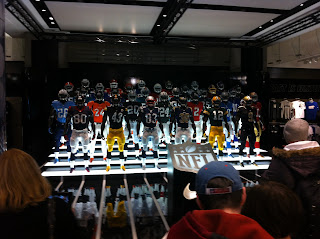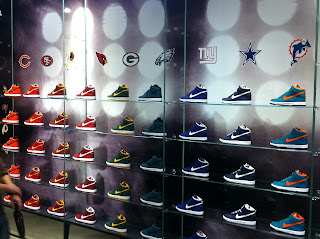'NO LOGO' by Naomi Klien
Useful chapters//chapters of interest:-
- chapter three - Alt. Everything: the youth market and the marketing of cool p63-87
- chapter five - Patriarchy Gets Funky: the triumph of identity marketing p107-129
- chapter six - Brand Bombing: franchises in the age of the superbrand p129-143
- chapter nine - The Disregarded Factory: degraded production in the age of the superbrand p195-231
- chapter twelve - Culture Jamming: ads under attack p279-311
- chapter fifteen - The Brand Boomerang: the tactics of brand-based campaigns p345-365
- chapter sixteen - A Take of Three Logos: the swoosh, the shell and the arches p365-397
- conclusion - Consumerism Versus Citizenship: the fight for the global commons p439-447
'DESIGN FOR SOCIETY' by Nigel Whiteley
Useful chapters//chapters of interest:-
- chapter 1 - Consumer-led Design p7-47
- chapter 2 - Green Design p47-94
- chapter 3 - responsible design and ethical consuming
'DESIGN FOR SUSTAINABLE CHANGE' by Anne Chick & Paul Micklethwaite
Useful chapters//chapters of interest:-
- chapter 2 (2.1) - Societal challenges are design challenges
- chapter 4 (4.1 through to 4.4)
- chapter 5 (5.2 & 5.3)
- chapter 6 (6.1 & 6.3)
'GOOD: AN INTRODUCTION TO ETHICS IN GRAPHIC DESIGN' by Lucienne Roberts
Useful chapters//chapters of interest:-
- Section 2: approaching good
- Section 4: Being good - specifically look at 'Graphics design/public art: Sheila Levrant de Bretteville'
'VISUAL COMMUNICATION FROM THEORY TO PRACTICE' by Jonathan Baldwin & Lucienne Roberts
Useful chapters//chapters of interest:-
Culture section
- whats is culture? p74-82
- style and identity p88-98
Conflict Section
- the political designer p136-146
'THE FUNDAMENTALS OF BRANDING' by Melissa Davis
Useful chapters//chapters of interest:-
- chapter 2 - Deconstructing Brands
- chapter 3 - The Changing Brand Audience
'DESIGN FOR THE REAL WORLD - human ecology and social change' by Victor Papanek
Useful chapters//chapters of interest:-
Part One: how it is
- chapter 5 - Our Kleenex Culture: obsolescence and value p86-102
Part Two: how it could be
- chapter 10 - Environmental Design: pollution, crowding, ecology p248-285
'THE GREEN IMPERATIVE - ecology and ethics in design and architecture' by Victor Papanek
Useful chapters//chapters of interest-
- chapter 5 - the biotechnology of communities p105 (looks at the consumer)
- chapter 7 - Form Follows Fun p139
- chapter 8 - Is Convenience the Enemy? p159
'SUSTAINABLE' by Aaris Sherin
Useful chapters//chapters of interest:-
Part One
- chapter 1 - Overview of Sustainable Design p12-26
- chapter 2 - Sustainable Motivators p26-36
'BRANDS AND BRANDING' by Rita Clifton & John Simmons
Useful chapters//chapters of interest:-
Part 1
- chapter 2 - the financial value of brands p27
- chapter 3 - the social value of brands p47
Part 2
- chapter 5 - brand positioning and brand creation p79
- chapter 7 - visual and verbal identity p113
- chapter 9 - the public relations perspective on branding p143
Part 3
- chapter 12 - an alternative perspective on brands: markets and morals p185


































